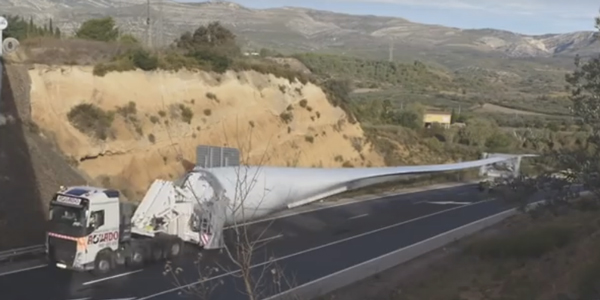By Michael Kuser
ALBANY, N.Y. — With the cost of energy storage declining worldwide, New York plans to ride the wave of the technology to a cleaner energy future, targeting deployment of 1,500 MW by 2025.
Participants heard that and more at the Capture the Energy 2018 conference on Wednesday, hosted by the New York Battery and Energy Storage Technology (NY-BEST) Consortium.
William Acker, executive director of NY-BEST, said three key factors are driving the use of energy storage.
“We talk about increasing the efficiency of the grid, about reducing peak load and serving as a peaking facility for the grid,” Acker said. “We talk about increasing renewables.”
And the “linchpin,” according to Acker: resilience.
“We were over at National Grid yesterday and we were talking about resilience, that resilience means something different from reliability,” Acker said. “Reliability is how well you do on typical operating days; resilience is how well you do in the face of adversity. Winston Churchill had resilience. It’s how well you do when you’re facing the storms.”
‘God Wants Storage’

New York Public Service Commission Chair John Rhodes, whom the governor tapped to lead his energy storage initiative, said the state’s Reforming the Energy Vision “can be an awesomely complex interweaving of multiple proceedings, but it’s kind of a complicated machine that’s trying to do something simple.”
“It’s good to keep in mind what that simple thing is: arrive at an energy system that is cleaner, that’s more affordable, that’s more resilient, that’s always reliable,” Rhodes said. “Basically, the energy system that’s right and necessary for New Yorkers.”
He said the grid contains latent value that is not currently being captured or monetized. A natural approach to remedying that shortcoming would be to reveal and reward that value, whether it relates to carbon reduction, location, firming and time-based capabilities, or the provision of system-level services.
Rhodes also emphasized the benefits of markets at scale.
“We know that when markets get big, costs come down, innovative companies find different ways to persuade different kinds of customers with a different kind of proposition appealing to their different motivations,” Rhodes said. “We want that. We don’t want one-offs. If we’re doing things, we’d rather see first-of-a-kind innovations than one-of-a-kind innovations.
“As a regulator, and as a contributor to this agenda, we’re obviously trying to encourage more innovation and more investment — other people’s money,” he said. “And we’re obviously going to try to do that as smartly as possible. We are going to as much as possible stay in the mode of being solution-agnostic. We want to specify the problem and have the world come up with solutions, harvest the benefits of competition, pick the best and set the others aside.”
Rhodes said the preliminary results of a storage study New York is developing already indicate that the lifetime benefits of the state’s 1,500 MW by 2025 storage goal “completely and clearly” exceed costs.
“And they also reveal that God wants storage to be in Zones J and K [New York City and Long Island]. Amazingly, it’s confirming what everybody expected,” Rhodes said.
Costs and Goals

Yayoi Sekine, a Bloomberg energy analyst, spoke about the decreasing cost of lithium-ion batteries and the increasing penetration of electric vehicles in the automobile market. She predicted the cost of the batteries will drop from the current $209/kWh to $70/kWh by 2030, and that EVs will make up one-third of all motor vehicles by 2040.
The world has moved from a scenario in which the people talking about EVs “seemed kind of crazy” to one in which more than 1 million EVs were sold last year, with major automakers moving into the market, Sekine said.
Joe Martens, director of the New York Offshore Wind Alliance, detailed some of the “stunning” developments in offshore wind mentioned by Rhodes.
Wind farms are growing in scale along with the size of wind turbines, Martens said, noting that General Electric this month announced the development of the largest-ever offshore wind turbine, a 12-MW giant standing 853 feet tall.
“New York is off to a very good start,” Martens said, noting that the state has set a goal of 2.5 GW of offshore wind by 2030 and issued a master plan for the industry, while the Long Island Power Authority last year signed a contract with Deepwater Wind for 90 MW of wind power from what will be the largest offshore wind farm in the U.S. when it becomes operational in 2022.
The state plans to conduct offshore wind solicitations over the next two years, each a minimum of 400 MW. (See NY Offshore Wind Plan Faces Tx Challenge.)
Also last year, the New York State Energy Research and Development Authority recommended that the U.S. Bureau of Ocean Energy Management establish at least four new wind energy areas off the state’s coast, each capable of siting a minimum of 800 MW of generation, Martens said.
“There is cause for optimism” regarding the prospects of combining storage with offshore wind projects in New York, Martens said. The Massachusetts offshore wind solicitation in December provided one hopeful sign, with two out of three bidders pairing storage with their generation plans. (See Mass. Receives Three OSW Proposals, Including Storage, Tx.)
Martens also mentioned Statoil’s recent bid to combine offshore wind with storage off the coast of Scotland. “The purpose of that was to teach the battery when to hold back and store electricity and when to send power to the grid, which is obviously the Holy Grail of trying to figure out how to maximize profits,” he said.




